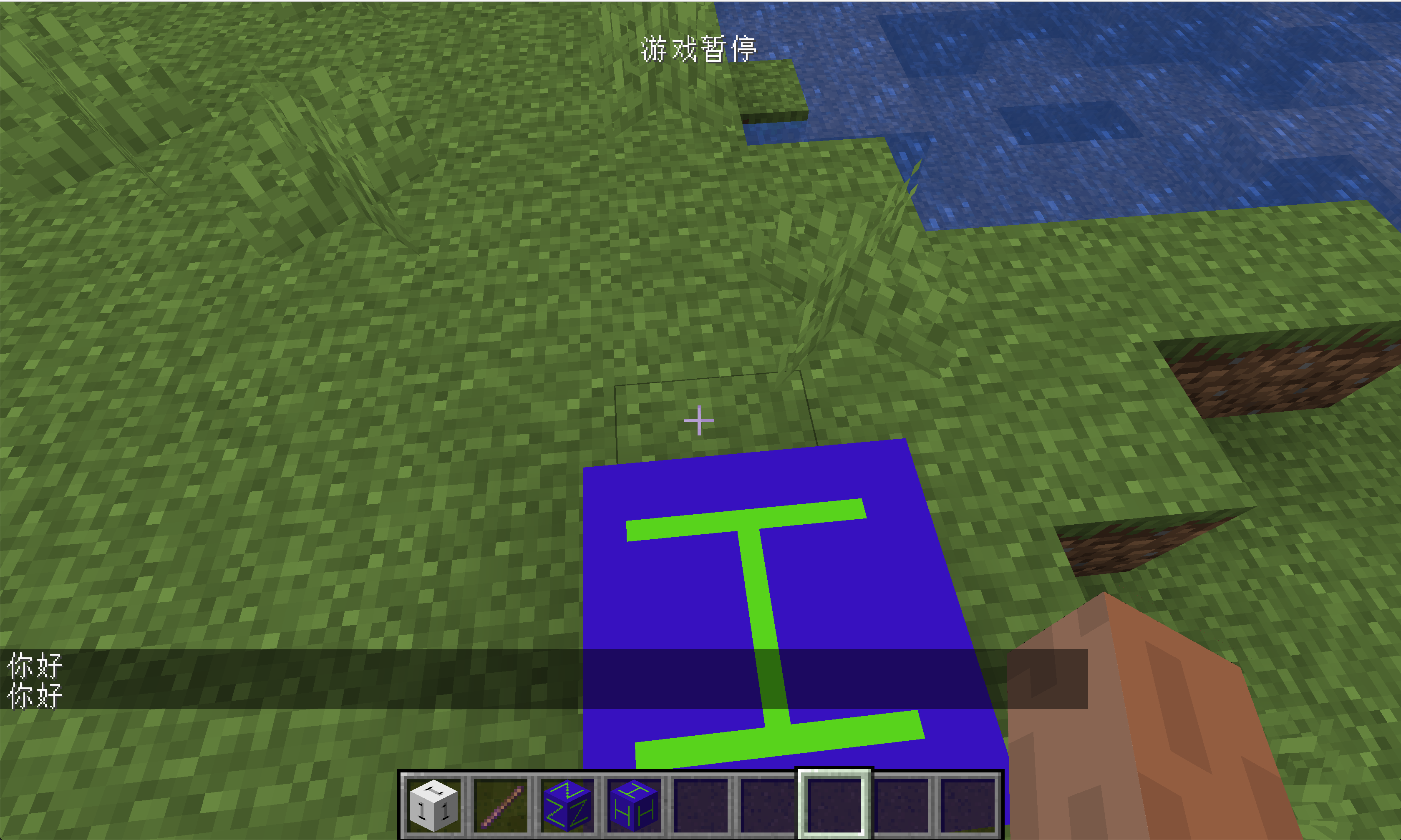ITickableTileEntity
In this section, we will learn about one of the most important interfaces in TileEntity: ITickableTileEntity.
In this section, we will take the creation of a box that automatically greets us as an example to reflect the function of this interface.
ObsidianHelloBlock:
public class ObsidianHelloBlock extends Block {
public ObsidianHelloBlock() {
super(Properties.create(Material.ROCK).hardnessAndResistance(5));
}
@Override
public boolean hasTileEntity(BlockState state) {
return true;
}
@Nullable
@Override
public TileEntity createTileEntity(BlockState state, IBlockReader world) {
return new ObsidianHelloTileEntity();
}
}
ObsidianHelloTileEntity:
public class ObsidianHelloTileEntity extends TileEntity implements ITickableTileEntity {
private static final int MAX_TIME = 5 * 20;
private int timer = 0;
public ObsidianHelloTileEntity() {
super(TileEntityTypeRegistry.obsidianHelloTileEntity.get());
}
@Override
public void tick() {
if (world != null && !world.isRemote) {
if (timer == MAX_TIME) {
PlayerEntity player = world.getClosestPlayer(pos.getX(), pos.getY(), pos.getZ(), 10, false);
TranslationTextComponent translationTextComponent = new TranslationTextComponent("message.hello_block.hello");
if (player != null) {
player.sendStatusMessage(translationTextComponent, false);
}
timer = 0;
}
timer++;
}
}
}
In fact, the code of this block entity is much simpler than the code of the first block entity we made. You can see that we have implemented the ITickableTileEntity interface here. This interface has only one method that needs to be implemented, which is the tick method, so the name implies. This will be executed once in each game tick. We have made a counter here, and then The nearest player within 10 block around the block position is obtained through the world.getClosestPlayer method, and then a TranslationTextComponent message is created, and finally player.sendStatusMessage is called to send the message to the player, and the sendStatusMessage accepts ITextComponent interface.
Don't forget the translation of language files:
"message.hello_block.hello": "Hello"
Register TileEntityType:
public static RegistryObject<TileEntityType<ObsidianHelloTileEntity>> obsidianHelloTileEntity = TILE_ENTITIES.register("obsidian_hello_tileentity", () -> TileEntityType.Builder.create(ObsidianHelloTileEntity::new, BlockRegistry.obsidianHelloBlock.get()).build(null));
The other registration and creation of model files are omitted here, and I believe that readers have the ability to complete them independently.
Open the game and get close to the block
You can see that our block is greeting us.
